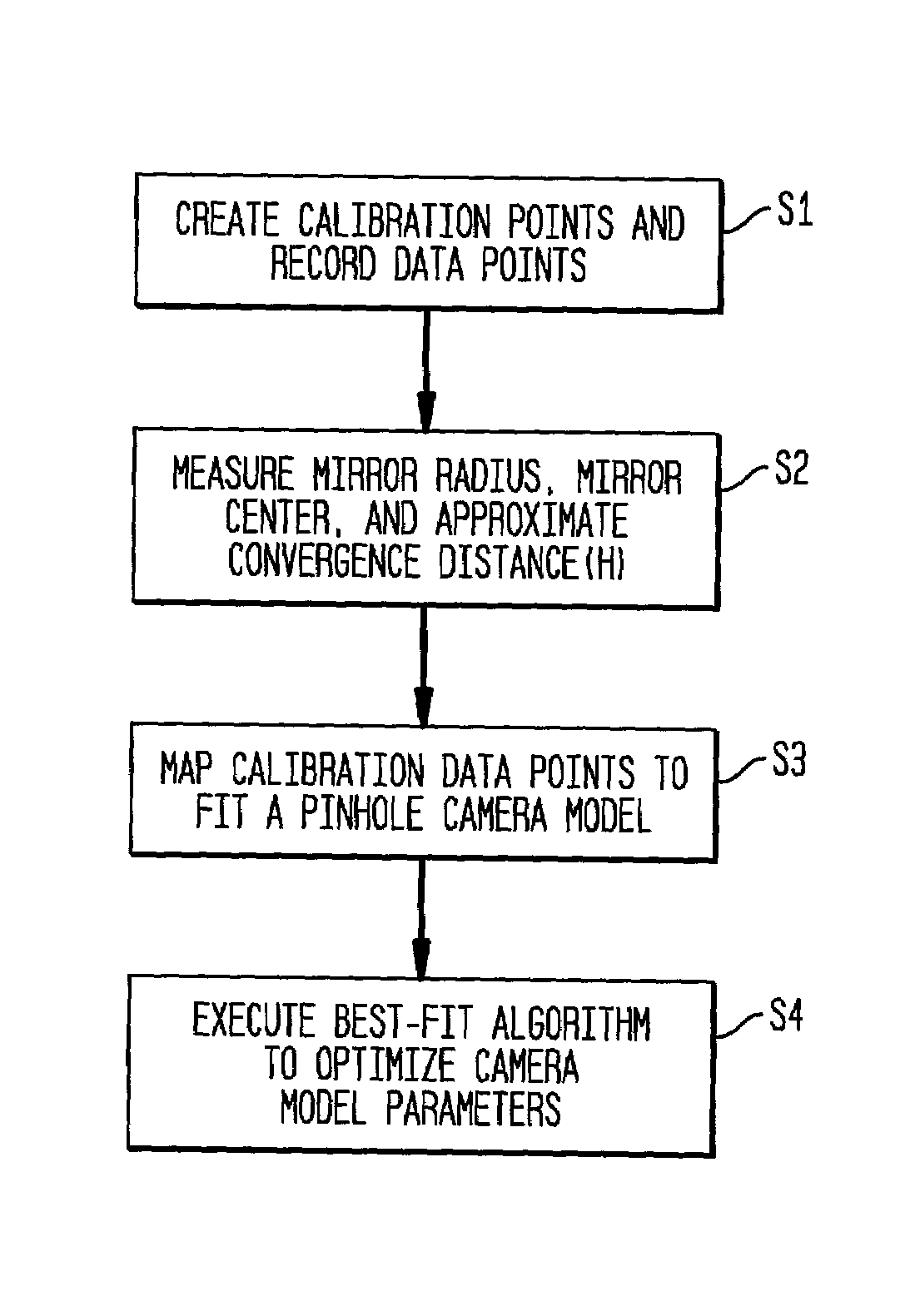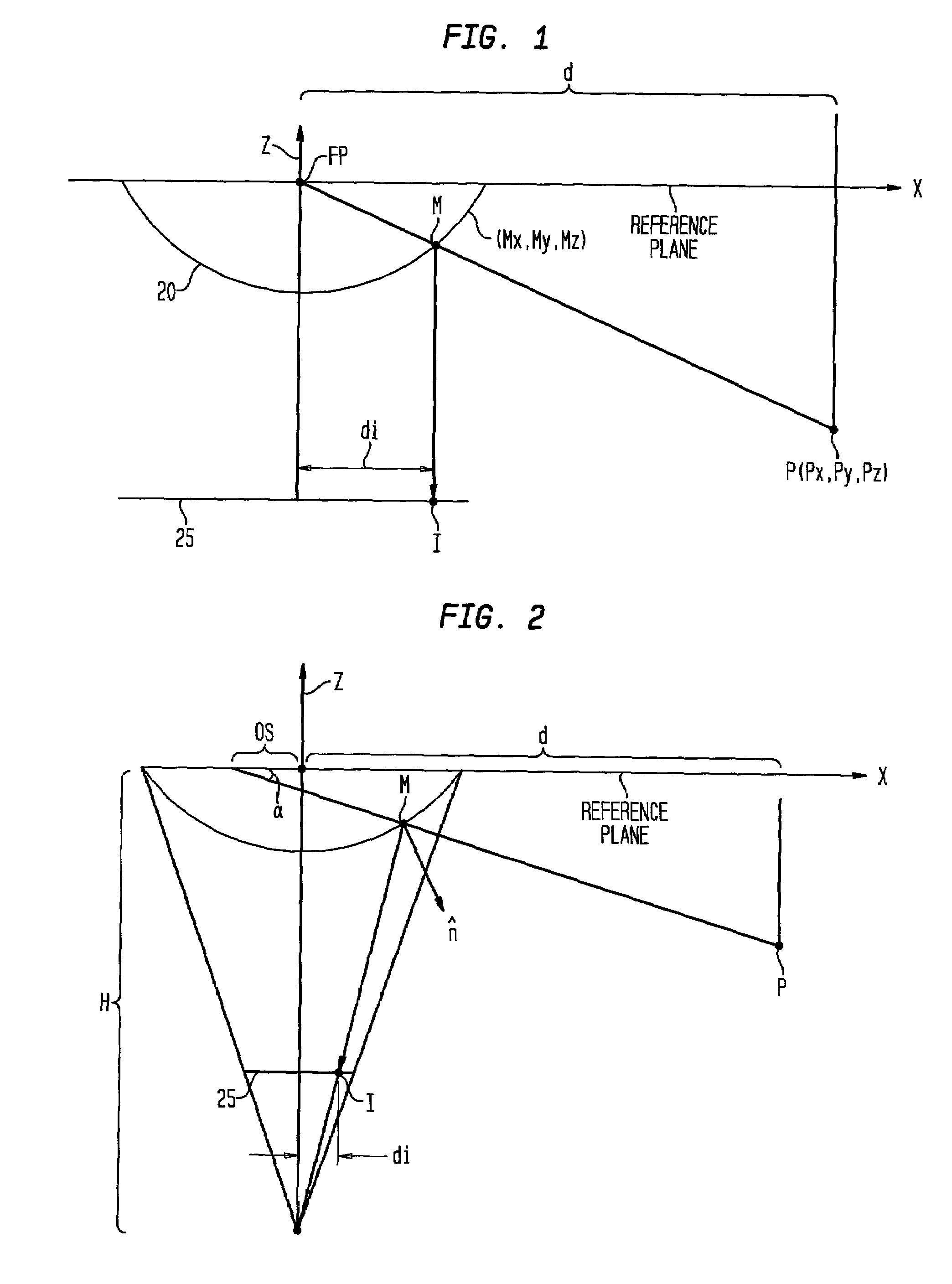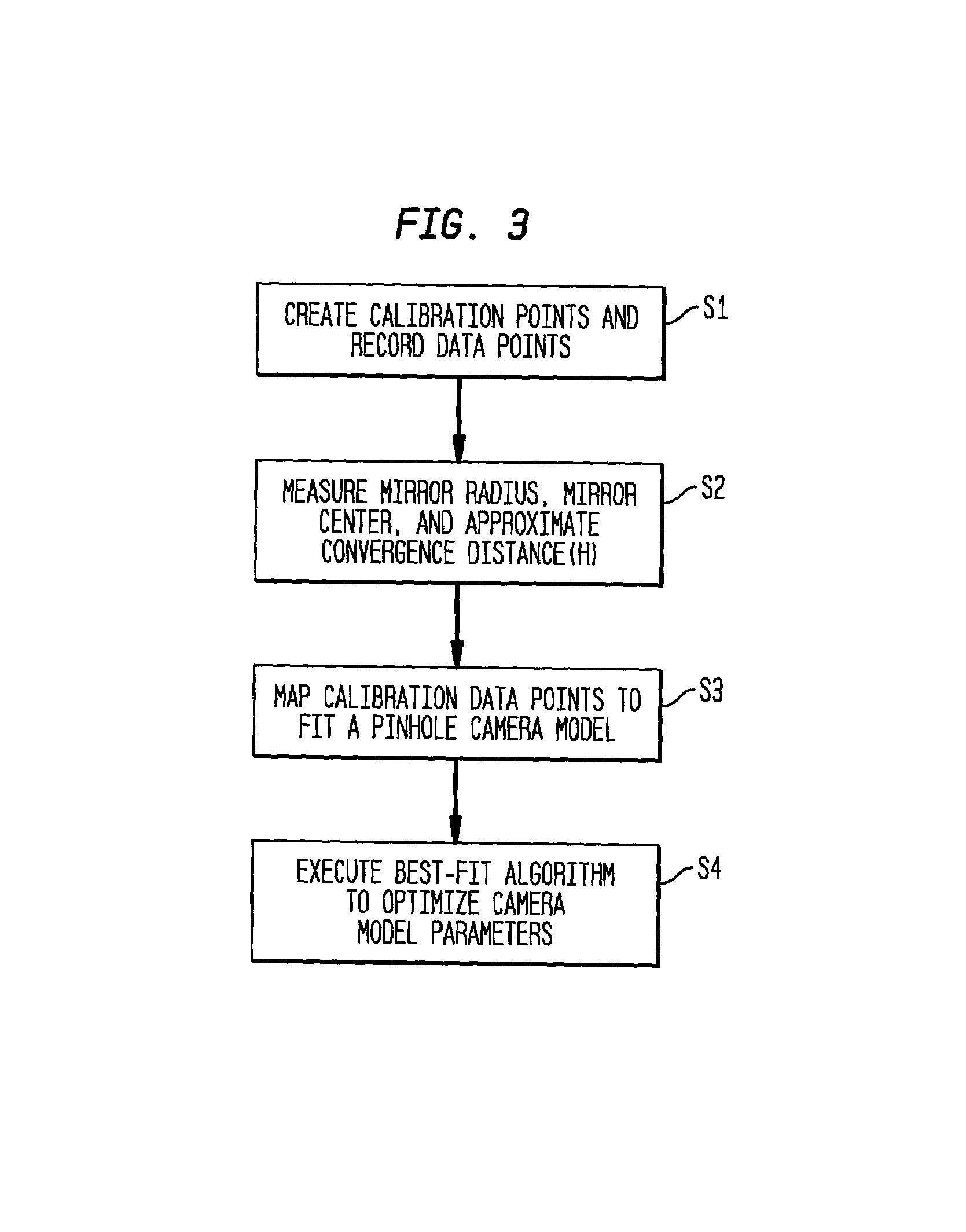Camera model and calibration procedure for omnidirectional paraboloidal catadioptric cameras
a catadioptric camera and camera technology, applied in image enhancement, instruments, printers, etc., can solve the problems of limiting the placement and size of the mirror, the difficulty of achieving perfect orthographic projection with current lens and camera technology, and the slight undesired perspective projection, etc., to achieve the effect of improving the calibration model of the omnidirectional camera
- Summary
- Abstract
- Description
- Claims
- Application Information
AI Technical Summary
Benefits of technology
Problems solved by technology
Method used
Image
Examples
Embodiment Construction
Ideal Paraboloidal Catadioptric Camera Model
[0020]An ideal model for a paraboloidal catadioptric camera is illustrated in FIG. 1. In a 3D environment, described by a coordinate system (x, y, z), a ray of light radiating from a given point P (px, py, pz) reflects off of point M (mx, my, mz) on the paraboloidal mirror 20, and projects onto the image plane 25 at point I. Since the paraboloidal mirror 20 is symmetric about the z-axis, point M may be represented as (mr, θ, mz) and P as (pr, θ, pz), where mr=√{square root over (mx2+my2)}, pr=√{square root over (px2+py2)}, and θ is the angle between the projection of the light ray onto the xy-plane and the x-axis. The reference plane of FIG. 1, which lies in the xy-plane, is perpendicular to the central axis of the paraboloidal mirror and goes through the focal point of the parabola. The camera image plane 25 is parallel to the aforementioned xy-plane. Since the profile of the mirror corresponds to the parabola
[0021]mz=mr22r-r2
(where r is...
PUM
 Login to View More
Login to View More Abstract
Description
Claims
Application Information
 Login to View More
Login to View More - R&D
- Intellectual Property
- Life Sciences
- Materials
- Tech Scout
- Unparalleled Data Quality
- Higher Quality Content
- 60% Fewer Hallucinations
Browse by: Latest US Patents, China's latest patents, Technical Efficacy Thesaurus, Application Domain, Technology Topic, Popular Technical Reports.
© 2025 PatSnap. All rights reserved.Legal|Privacy policy|Modern Slavery Act Transparency Statement|Sitemap|About US| Contact US: help@patsnap.com



